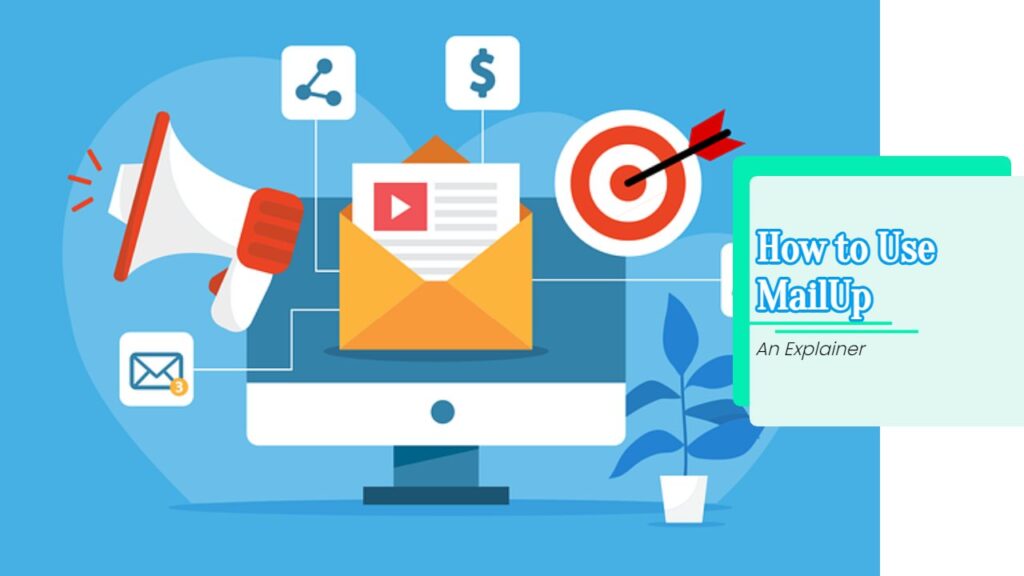In recent years, the software industry has experienced a significant shift towards Software as a Service (SaaS) models. This change has been driven by various factors, including the increasing demand for cost-effective, scalable, and easily accessible software solutions. As more businesses and consumers turn to SaaS, it is essential for both providers and customers to have a thorough understanding of SaaS agreements.
What is a SaaS Agreement?
A Software as a Service (SaaS) Agreement is a legal contract between a SaaS provider and a customer. The agreement outlines the terms and conditions under which the customer can access and use the provider’s software, typically hosted on the provider’s servers and accessed via the internet. The primary purpose of a SaaS agreement is to define the rights and responsibilities of both parties, protecting the provider’s intellectual property and ensuring the customer receives the agreed-upon services.
Related Read: 13+ Key Elements of a Software Development Agreement
Differences between SaaS, PaaS, and IaaS agreements
SaaS agreements are just one type of cloud service agreement, with Platform as a Service (PaaS) and Infrastructure as a Service (IaaS) being the other two primary types. SaaS agreements focus on the provision of software applications to customers, while PaaS agreements involve the delivery of a platform for customers to develop, run, and manage their own applications. IaaS agreements, on the other hand, cover the provision of virtualized computing resources over the internet, such as storage, networking, and processing power.
The role of SaaS agreements in managing the provider-customer relationship
SaaS agreements play a crucial role in managing the relationship between the provider and the customer. They set the foundation for the customer’s experience with the software and define the parameters within which both parties must operate. By establishing clear expectations and outlining the rights and responsibilities of each party, SaaS agreements help to minimize disputes and ensure the long-term success of the provider-customer relationship.
Key Components of a SaaS Agreement
A. Service description and scope
A well-drafted SaaS agreement should begin with a clear and concise description of the software service being provided. This section should detail the features, functionalities, and any limitations of the software, as well as any specific use cases or industries it is designed to serve. Defining the service scope helps to set customer expectations and provides a reference point for any future disputes or issues that may arise.
B. Access and usage rights
This section of the SaaS agreement grants the customer the right to access and use the software, typically on a non-exclusive, non-transferable basis. It should outline any limitations or restrictions on the use of the software, such as the number of authorized users, permitted devices, or geographic restrictions. The agreement may also specify the customer’s responsibility to ensure the software is used only for lawful purposes and in compliance with any applicable laws and regulations.
C. Service levels and performance guarantees
Service levels are a critical component of any SaaS agreement, as they define the performance expectations for the software. This section should include specific performance metrics, such as uptime guarantees, response times for customer support, and any penalties or remedies for failure to meet these targets.
By establishing clear service level agreements (SLAs), both parties can better understand their responsibilities and work together to ensure a high-quality user experience.
D. Data privacy and security
As SaaS applications often involve the storage and processing of customer data, it is vital to address data privacy and security in the agreement. This section should detail the provider’s responsibilities for safeguarding customer data, including the implementation of appropriate security measures and compliance with relevant data protection regulations, such as the General Data Protection Regulation (GDPR) or the California Consumer Privacy Act (CCPA).
Additionally, the agreement should outline the customer’s responsibilities in maintaining the security of their account, such as keeping login credentials confidential and promptly reporting any unauthorized access. You may need to create a separate data processing agreement as well.
E. Intellectual property rights
The intellectual property (IP) rights section of a SaaS agreement defines the ownership of any IP created or used in the course of providing the service. Generally, the provider retains ownership of the software and any related IP, while the customer retains ownership of their data.
This section should also clarify the extent to which the customer may use the provider’s IP, such as for promotional purposes or integration with other applications.
Related Reads:
- How Intellectual Property Laws protect Trade Secrets and Software Code in the US
- Can You Protect Your Software by Patent or Copyright in India?
- How to Protect Your Software Code in the US
- All the Key Elements of a Website Development Agreement: Explained!
F. Payment terms and pricing models
A comprehensive SaaS agreement should include clear payment terms and pricing models. This section should detail the fees associated with the service, the billing frequency, and any applicable discounts or penalties for early termination or late payment. The agreement may also specify the conditions under which the provider may adjust pricing, as well as any notice requirements for such changes.
G. Customer support and maintenance
A critical aspect of any SaaS relationship is the provision of customer support and maintenance services. This section should outline the provider’s responsibilities in addressing customer issues, providing technical assistance, and maintaining the software.
Additionally, it may specify any regular maintenance windows, during which the provider may perform updates or repairs that could result in temporary service disruptions.
H. Warranty disclaimers and limitations of liability
SaaS agreements often include warranty disclaimers and limitations of liability to protect the provider from potential legal claims. Warranty disclaimers typically state that the software is provided “as is” and that the provider makes no guarantees regarding its performance or suitability for a particular purpose.
Limitations of liability generally cap the provider’s potential liability for damages resulting from the use of the software or any related services, often to the amount paid by the customer for the service during a specified period.
I. Termination and renewal provisions
Termination and renewal provisions define the conditions under which the SaaS agreement may be terminated or renewed. This section should specify the initial term of the agreement, any automatic renewal provisions, and the notice requirements for non-renewal or termination.
Additionally, it should outline the consequences of termination, such as the customer’s obligation to cease using the software and the provider’s responsibility to return or delete customer data.
J. Governing law and dispute resolution
The governing law and dispute resolution section of a SaaS agreement establishes the legal framework for resolving any disputes that may arise between the parties. This section should specify the governing law (i.e., the jurisdiction whose laws will apply to the agreement) and the preferred method of dispute resolution, such as arbitration or litigation.
In some cases, the agreement may also include a mandatory mediation or negotiation clause to encourage the parties to resolve their disputes amicably before resorting to formal legal proceedings.
Drafting an Effective SaaS Agreement
A. Tailoring the agreement to your specific service and business model
When drafting a SaaS agreement, it is essential to tailor the document to your specific software service and business model. This customization helps ensure that the agreement accurately reflects the unique aspects of your service, such as its features, functionality, and target market. Additionally, it enables you to address any industry-specific considerations or regulatory requirements that may apply to your service.
B. Ensuring clear and concise language
A well-drafted SaaS agreement should be written in clear and concise language that is easy for both parties to understand. Avoid using complex legal jargon or overly technical terms that may be confusing to non-experts.
Instead, focus on using plain language that clearly communicates the rights and responsibilities of each party. This approach not only helps to minimize misunderstandings and disputes but also demonstrates transparency and fosters trust between the provider and the customer.
C. Addressing regulatory requirements and compliance
Given the various regulations that may apply to SaaS services, it is crucial to ensure that your agreement addresses any relevant compliance requirements. This may include provisions related to data protection and privacy laws, export controls, and accessibility requirements, among others.
By incorporating these considerations into your agreement, you can help to minimize the risk of non-compliance and the associated legal consequences.
D. Incorporating industry-specific considerations
When drafting a SaaS agreement, it is essential to consider any industry-specific factors that may be relevant to your service. For example, certain industries may have specific regulatory requirements, such as healthcare (HIPAA) or finance (Sarbanes-Oxley Act of 2002), which must be addressed in the agreement.
Additionally, certain industries may have unique performance expectations, such as high availability or strict security standards, which should be reflected in the service levels and performance guarantees.
Negotiating and Customizing SaaS Agreements
A. Identifying key negotiation points for providers and customers
When negotiating a SaaS agreement, both parties should be aware of their key negotiation points and prioritize these issues accordingly. For providers, this may include aspects such as pricing, intellectual property rights, and limitation of liability.
For customers, key negotiation points may include service levels, data security, and customization options. By focusing on these critical issues, both parties can work together to create an agreement that meets their respective needs and expectations.
B. Balancing flexibility and standardization
While it is essential for SaaS agreements to be tailored to each specific service, it is also important to strike a balance between customization and standardization. Providers should develop a standard agreement that addresses the fundamental aspects of their service, which can then be adapted to meet the unique needs of each customer.
This approach allows providers to maintain consistency across their customer base while still offering the flexibility needed to accommodate individual customer requirements.
C. Customizing agreements to meet unique needs and expectations
In some cases, customers may have unique needs or expectations that require customization of the standard SaaS agreement. This may include special pricing arrangements, additional service levels, or custom development work.
When customizing an agreement, both parties should ensure that the changes are clearly documented and that any potential legal or operational implications are fully understood and addressed.
Enforcing and Updating SaaS Agreements
A. Monitoring compliance and addressing violations
Once a SaaS agreement is in place, both parties should actively monitor compliance with the terms and conditions outlined in the contract. Providers should have processes in place to detect and address any violations of the agreement, such as unauthorized use or access.
Customers should also be diligent in ensuring their own compliance, as well as reporting any issues or concerns to the provider.
B. Updating agreements to reflect changes in the service or legal landscape
As the SaaS industry and the legal landscape continue to evolve, it is essential for both parties to regularly review and update their agreements to ensure they remain current and compliant.
This may involve making changes to address new regulatory requirements, updating service levels to reflect improvements in technology, or modifying pricing models to accommodate market changes. By keeping the agreement up-to-date, both parties can ensure that their relationship continues to be successful and mutually beneficial.
C. Communicating updates and modifications to customers
When changes are made to a SaaS agreement, it is crucial for providers to communicate these updates to their customers in a timely and transparent manner. This may involve providing advance notice of any significant changes, explaining the reasons for the modifications, and offering customers the opportunity to ask questions or provide feedback.
By maintaining open lines of communication and fostering a collaborative relationship, providers can help to ensure that customers remain satisfied with the service and are more likely to accept any necessary changes to the agreement.
SaaS Agreement Best Practices
#1. SaaS Providers should ensure the agreement protects their intellectual property and minimizing liability
To protect their intellectual property and minimize liability, SaaS providers should ensure that their agreements clearly define ownership rights, usage limitations, and any restrictions on the customer’s use of the software.
Additionally, providers should include warranty disclaimers and limitations of liability clauses to minimize their exposure to potential legal claims. Implementing robust security measures and maintaining compliance with relevant regulations can also help to reduce the risk of liability.
#2. SaaS Customers should keep an eye out for ensuring service quality and value
For customers, the key to a successful SaaS relationship is ensuring that they receive a high-quality service that delivers value for their investment. To achieve this, customers should carefully review the service levels, performance guarantees, and support provisions in the agreement, and negotiate any necessary changes to align with their specific needs and expectations.
Additionally, customers should actively monitor the provider’s performance and fulfillment as per the contract, and communicate any issues or concerns promptly.
#3. Identifying and addressing potential legal issues and disputes
Both providers and customers should be proactive in identifying and addressing potential legal issues and disputes related to their SaaS agreement. This may involve regularly reviewing the agreement for compliance with applicable laws and regulations, monitoring performance and usage for potential violations, and promptly addressing any disputes that may arise. \
By taking a proactive approach, both parties can help to minimize the risk of legal issues and maintain a successful and harmonious relationship.
Legal and Regulatory Considerations for SaaS Agreements
A. Differences in SaaS agreement enforcement across jurisdictions
Given the global nature of the SaaS industry, providers and customers may find themselves subject to different legal jurisdictions and enforcement mechanisms.
When drafting and negotiating a SaaS agreement, it is essential to consider the potential implications of these differences, such as varying contract enforcement standards, data protection regulations, or dispute resolution procedures. By addressing these issues in the agreement, both parties can help to minimize the risk of legal complications or disputes.
B. Compliance with data protection and privacy laws (e.g., GDPR, CCPA)
As previously mentioned, data protection and privacy laws, such as the GDPR and CCPA, play a significant role in SaaS agreements.
Both providers and customers should ensure that their agreement addresses any relevant compliance requirements, including data processing, storage, and transfer provisions, as well as any necessary data protection addendums or clauses. Failure to comply with these regulations can result in significant fines and legal consequences for both parties.
C. Export controls and restrictions
Depending on the nature of the software and the jurisdictions in which it is used, SaaS providers and customers may be subject to export control regulations. These regulations govern the transfer of certain technologies, data, and services across national borders and may impose specific licensing or reporting requirements.
To ensure compliance with these rules, both parties should carefully review any applicable export controls and incorporate any necessary provisions into their agreement.
D. Accessibility requirements
In some jurisdictions, SaaS providers may be subject to accessibility requirements, such as the Americans with Disabilities Act (ADA) in the United States. These regulations mandate that certain software and services be accessible to individuals with disabilities, and may impose specific design or functionality standards.
To minimize the risk of non-compliance, providers should ensure that their software meets any applicable accessibility requirements and address these considerations in their agreement.
The Future of SaaS Agreements and the Software Industry
Emerging technologies, such as artificial intelligence, blockchain, and the Internet of Things (IoT), are transforming the software industry and will have significant implications for SaaS agreements. These advancements may necessitate new provisions related to data processing, security, and intellectual property rights.
As technology continues to evolve, providers and customers must stay informed about these developments and adapt their agreements accordingly.
The legal and regulatory landscape for SaaS agreements is also in a constant state of change. As governments and regulatory bodies enact new legislation and update existing regulations, both providers and customers must remain vigilant in maintaining compliance.
Regularly reviewing and updating SaaS agreements to reflect these changes is essential to minimize the risk of legal complications.
As the SaaS industry continues to grow and evolve, providers and customers must be prepared to adapt their agreements to new challenges and opportunities. This may involve developing new pricing models, incorporating emerging technologies, or addressing novel legal and regulatory issues.
By staying informed and maintaining a flexible approach, both parties can ensure that their SaaS agreements remain effective and mutually beneficial.
Related Reads:
- A Deep Dive into the basics of a Smart Contract
- Smart Contract vs Traditional Contract: What’s the difference?
Wrapping it up
A thorough understanding of SaaS agreements is essential for both providers and customers to ensure a successful and mutually beneficial relationship. By taking the time to educate themselves about the various aspects of these contracts, both parties can minimize the risk of disputes, maintain compliance with relevant regulations, and optimize the value of their software services.
Read Next:
- How to Incorporate Your Startup into an LLC: The Definitive Guide
- Recent Trends in M&A in India
- A Deep Dive into End-User Licensing Agreements
- Sales Intelligence Strategies You Must Use!





















